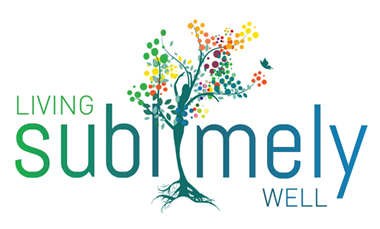 June is National Patient Safety Month and nurses are a captive audience when it comes to safety measures in the workplace. When a nurse feels that there nursing unit is unsafe, they can be compelled to DO something about it. It is crucial that we set up systems and strategies which make it easier for nursing to perform crucial roles in a safe work environment.
June is National Patient Safety Month and nurses are a captive audience when it comes to safety measures in the workplace. When a nurse feels that there nursing unit is unsafe, they can be compelled to DO something about it. It is crucial that we set up systems and strategies which make it easier for nursing to perform crucial roles in a safe work environment.
Deborah Wood, RN, author of the article ‘The Top Six Things Nurses Can Do to Improve Patient Safety‘ interviewed Patricia McGaffigan, RN, MSN, chief operating officer of the National Patient Safety Foundation (NPSF). This dialogue highlighted the role that nursing plays in improving patient safety measures. Strategies related to communication, checklists, and engaging the patient in their healthcare plan are ways to avoid errors and medical mistakes. While organizational policies are significant for safety success, they can leave the individual nurse questioning…
[Tweet “What Can I Do as an Individual to Impact Safety in the Workplace?”]
This is a great question. There is often a collaboration that needs to occur between organization, leadership, nursing units, and the individual nurses themselves. Each of these ‘legs’ helps create the sturdy foundation needed to hold the steady seat of safety.
So let’s get to some solutions for the nurse looking around their unit thinking, “My unit is unsafe. What can I do as an individual to impact the culture of safety in my workplace?”
Here Are 3 Unconventional Strategies for Individual Nurses to Create a Culture of Safety at Work:
 Take Your Time & Stay Present. Nurses often feel as though they have no time with their patients. In fact, this collective opinion was the impetus to the annual Nurse’s Week, Art of Nursing program. Nurses, both on and offline, were telling me: “Elizabeth, I have no time with my patients!” Whether it be the roll out of technology, the additions to the patient census, the short staffing, or whatever bright shiny priority was currently getting in the way… nursing time is precious. And a nurse goes into nursing to spend time with the patient- to teach, comfort, and advocate for. Well, even though it may seem as though you are spinning your wheels throughout the day, never to find time with the patient… I am going to encourage you to focus on the very opposite. Pause when you are entering a patient’s room. Make eye contact during each patient interaction. Take your time and be mindful when speaking to the patient in front of you. The Art of Nursing program has shared numerous tactics for helping the nurse have more time throughout the busy day… but my favorite way? Before entering a patient room, ground the feet to the floor. Feel the physical body and take one cleansing breath. As you enter the room, make a conscious decision to remain present during the short time you do have with the patient you are caring for in the very moment that you are.
Take Your Time & Stay Present. Nurses often feel as though they have no time with their patients. In fact, this collective opinion was the impetus to the annual Nurse’s Week, Art of Nursing program. Nurses, both on and offline, were telling me: “Elizabeth, I have no time with my patients!” Whether it be the roll out of technology, the additions to the patient census, the short staffing, or whatever bright shiny priority was currently getting in the way… nursing time is precious. And a nurse goes into nursing to spend time with the patient- to teach, comfort, and advocate for. Well, even though it may seem as though you are spinning your wheels throughout the day, never to find time with the patient… I am going to encourage you to focus on the very opposite. Pause when you are entering a patient’s room. Make eye contact during each patient interaction. Take your time and be mindful when speaking to the patient in front of you. The Art of Nursing program has shared numerous tactics for helping the nurse have more time throughout the busy day… but my favorite way? Before entering a patient room, ground the feet to the floor. Feel the physical body and take one cleansing breath. As you enter the room, make a conscious decision to remain present during the short time you do have with the patient you are caring for in the very moment that you are.- Listen to Your Nursing Judgement. Recently, I posed a question on my social media platforms that asked: “What piece of advice did you receive in nursing school that has stuck with you?” A nurse working in West Virginia responded with this: “Listen to your gut. If something feels wrong it probably is. I also received this advice from an instructor after not doing very well on my first nursing school exam because I changed the original correct answers.” I couldn’t have said it better myself! Sure, we can study for all of the exams. We can perfect our nursing skills; delegate with confidence; and be active on nursing practice councils. But it’s all naught if we cannot trust our nursing instinct. This is the hair on the back of your neck that stands up when something just doesn’t feel quite right. Or that nagging feeling that keeps making you check on the alarms over and over again. It can mean life or death as we all know a story of that nurse who ignored the monitors and paged the resident any way in the middle of the night… which led to saving the pregnant woman’s life! Let’s face it- books, skills, and talent is all needed. But that nursing judgement, that gut instinct… that is what keeps patients safe.
- Choose Your Self & Your Health. Remember, I told you these would be ‘unconventional’ tips for safe workplaces. So here’s my favorite one yet. Pay attention to your health. Take care of yourself. The number one way, in my opinion, to make an error or create an unsafe work environment- is to show up distracted, tired, or sick. When you’re not feeling your best, you cannot do your best. And there’s one person who may suffer more than you do- the patient! Think back about tip number two above. If you were feeling foggy or couldn’t clear your mind, could you catch the insignificant things that mean so much? If you come to work sick- sneezing, coughing, and achy- how can you stand, lift, run, or turn? You have to take care of yourself. This is the number one way to impact the culture of safety on your nursing unit. Put you first and that self-awareness will ripple out to safe workplaces all around.
What did we miss? I’d love to hear how you impact the culture of safety on your unit. Leave a safety tip in the comments below. Thanks for reading!
Special Note: Patricia McGaffigan will be one of the twelve nurse experts interviewed during the 2017 Art of Nursing program. Be sure to stay tuned for more information. In fact, let your employer know now. The earlier we can organize… the more likely your organization can celebrate Nurse’s Week with the Art of Nursing program! Tell your nursing leadership to click here to contact me to start planning today.
About the Author: As a keynote speaker, bestselling author and virtual conference host, Elizabeth partners with hospitals, organizations, associations, and nursing groups to help transform the field of nursing from the inside out. In her bestselling book, ‘Nursing from Within‘, Elizabeth supports nurses to make those inner shifts that are required to more fully enjoy our nursing careers.

Listen to your gut! I stand with the nurse from West Virginia.
I share this advice with my nursing students all the time!
Thanks for sharing these “unconventional” tips Elizabeth.
Great to hear. Glad you enjoyed this, Donna.
This is an excellent post with empowering options that we have to create cultures of safety. I would add that individuals can use communication skills e.g. be assertive about needing more time, delegate a task and/or or ask for help, e.g. “I need more time with Mrs. Smiths discharge. She has a lot of questions and seems very anxious. Can you get Mr. Jones’ blood transfusion going?” Do you think this might help with all of the other three tips?
Perfect addition, Beth. Thanks!
Self-Care is an important foundation for nurses and all of humanity
Important and thought provoking tips on how nurses can learn to manage unsafe work places. Nurses need to take time to empower themselves and to not be afraid to take a stand. Creating a Culture of Safety that allows this to happen is critical if we can ever hope to have a safe and caring healthcare system.
Good work Elizabeth
Thanks, Anne!
as I worked along with 17 patient what do I do can’t take care of all of them by my self when two work on my shift have quit and the nurse has her work to do and not help me
Wonderful blog article as usual. I’m in awe of all you do Elizabeth!
Aww, thank you so much, Carmen! Back at ya :- )
Elizabeth, thank you for discussing the importance of safety in the workplace for nurses. If we want to repair broken delivery care systems, then creating a culture of safety needs to be a robust skill that is emphasized throughout our education, as well as once out in practice.
Thanks, Dr. Jaffe!